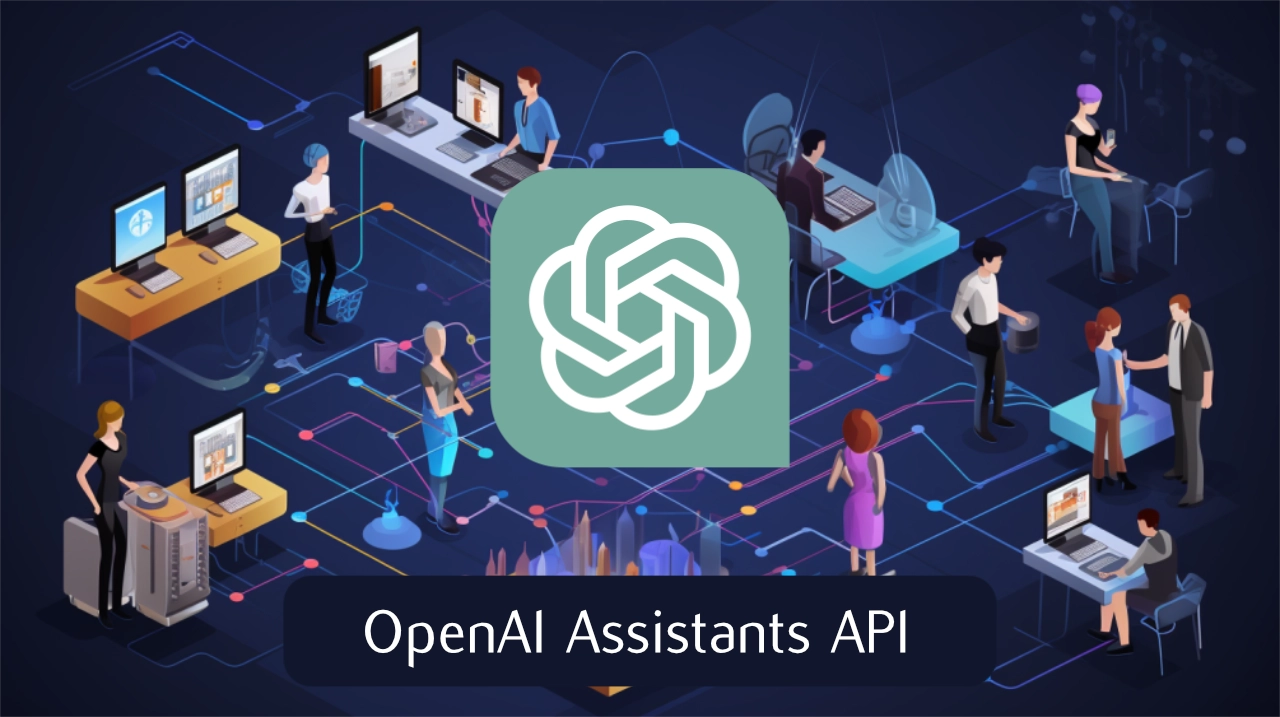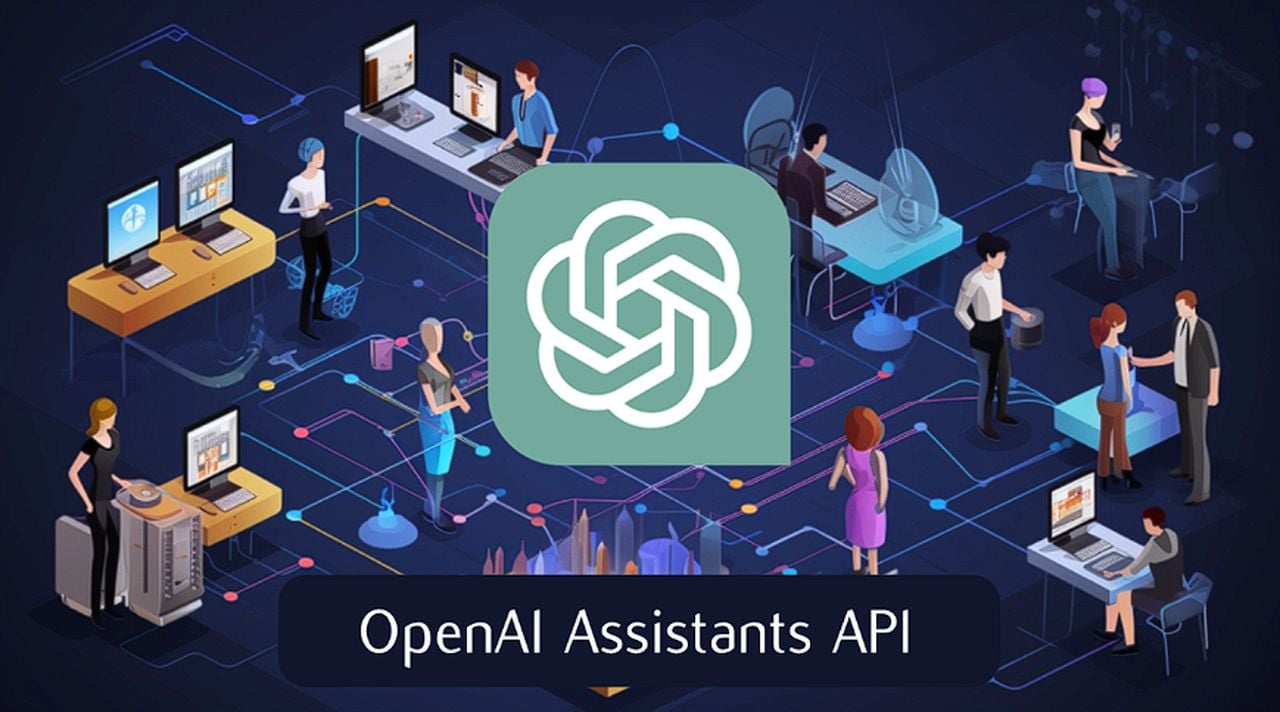
During the recent OpenAI developer conference Sam Altman introduced the company’s new Assistants API, offering a robust toolset for developers aiming to integrate intelligent assistants into their own creations. If you’ve ever envisioned crafting an application that benefits from AI’s responsiveness and adaptability, OpenAI’s new Assistants API might just be the missing piece you’ve been searching for.
At the core of the Assistants API are three key functionalities that it supports: Code Interpreter, Retrieval, and Function calling. These tools are instrumental in equipping your AI assistant with the capability to comprehend and execute code, fetch information effectively, and perform specific functions upon request. What’s more, the horizon is broadening, with OpenAI planning to introduce a wider range of tools, including the exciting possibility for developers to contribute their own.
Three key functionalities
Let’s go through the fundamental features that the OpenAI Assistants API offers in more detail. These are important parts of the customization and functionality of AI assistants within the various applications you might building or have wanted to build but didn’t have the expertise or skill to create the AI structure yourself.
Code Interpreter
First up, the Code Interpreter is essentially the brain that allows the AI to understand and run code. This is quite the game-changer for developers who aim to integrate computational problem-solving within their applications. Imagine an assistant that not only grasps mathematical queries but can also churn out executable code to solve complex equations on the fly. This tool bridges the gap between conversational input and technical output, bringing a level of interactivity and functionality that’s quite unique.
Retrieval
Moving on to Retrieval, this is the AI’s adept librarian. It can sift through vast amounts of data to retrieve the exact piece of information needed to respond to user queries. Whether it’s a historical fact, a code snippet, or a statistical figure, the Retrieval tool ensures that the assistant has a wealth of knowledge at its disposal and can provide responses that are informed and accurate. This isn’t just about pulling data; it’s about pulling the right data at the right time, which is critical for creating an assistant that’s both reliable and resourceful.
Function calling
The third pillar, Function calling, grants the assistant the power to perform predefined actions in response to user requests. This could range from scheduling a meeting to processing a payment. It’s akin to giving your AI the ability to not just converse but also to take actions based on that conversation, providing a tangible utility that can automate tasks and streamline user interactions.
Moreover, OpenAI isn’t just stopping there. The vision includes expanding these tools even further, opening up the floor for developers to potentially introduce their own custom tools. This means that in the future, the Assistants API could become a sandbox of sorts, where developers can experiment with and deploy bespoke functionalities tailored to their application’s specific needs. This level of customization is poised to push the boundaries of what AI assistants can do, turning them into truly versatile and adaptable components of the software ecosystem.
How to use OpenAI Assistants API
In essence, these three functionalities form the backbone of the Assistants API, and their significance cannot be overstated. They are what make the platform not just a static interface but a dynamic environment where interaction, information retrieval, and task execution all come together to create AI assistants that are as responsive as they are intelligent.
Other articles you may find of interest on the subject of OpenAI and its recent developer conference
To get a feel for what the Assistants API can do, you have two avenues: the Assistants playground for a quick hands-on experience, or a more in-depth step-by-step guide. Let’s walk through a typical integration flow of the API:
- Create an Assistant: This is where you define the essence of your AI assistant. You’ll decide on its instructions and choose a model that best fits your needs. The models at your disposal range from GPT-3.5 to the latest GPT-4, and you can even opt for fine-tuned variants. If you’re looking to enable functionalities like Code Interpreter or Retrieval, this is the stage where you’ll set those wheels in motion.
- Initiate a Thread: Think of a Thread as the birthplace of a conversation with a user. It’s recommended to create a unique Thread for each user, right when they start interacting with your application. This is also the stage where you can infuse user-specific context or pass along any files needed for the conversation.
- Inject a Message into the Thread: Every user interaction, be it a question or a command, is encapsulated in a Message. Currently, you can pass along text and soon, images will join the party, broadening the spectrum of interactions.
- Engage the Assistant: Now, for the Assistant to spring into action, you’ll trigger a Run. This process involves the Assistant assessing the Thread, deciding if it needs to leverage any of the enabled tools, and then generating a response. The Assistant’s responses are also posted back into the Thread as Messages.
- Showcase the Assistant’s Response: After a Run has been completed, the Assistant’s responses are ready for you to display back to the user. This is where the conversation truly comes to life, with the Assistant now fully engaging in the dialogue.
Threads are crucial for preserving the context of a conversation with the AI. They enable the AI to remember past interactions and respond in a relevant and appropriate manner. The polling mechanism, on the other hand, is used to monitor the status of a task. It sends a request to the server and waits for a response, allowing you to track your tasks’ progress.
To interact with the Assistants API, you’ll need the OpenAI API key. This access credential authenticates your requests, ensuring they’re valid. This key can be securely stored in a .env file, an environment variable handler designed to protect your credentials.
If you’re curious about the specifics, let’s say you want to create an Assistant that’s a personal math tutor. This Assistant would not only understand math queries but also execute code to provide solutions. The user could, for instance, ask for help with an equation, and the Assistant would respond with the correct solution.
In this beta phase, the Assistants API is a canvas of possibilities, and OpenAI invites developers to provide their valuable feedback via the Developer Forum. OpenAI has also created documentation for its new API system which is deftly with reading before you start your journey in creating your next AI powered application or service.
OpenAI Assistants API is a bridge between your application and the intelligent, responsive world of AI. It’s a platform that not only answers the ‘how’ but also expands the ‘what can be done’ in AI-assisted applications. As you navigate this journey of integration, you will be pleased to know that the process is designed to be as seamless as possible and OpenAI provides plenty of help and insight, ensuring that even those new to AI can find their footing quickly and build powerful AI applications.
Filed Under: Guides, Top News
Latest timeswonderful Deals
Disclosure: Some of our articles include affiliate links. If you buy something through one of these links, timeswonderful may earn an affiliate commission. Learn about our Disclosure Policy.

